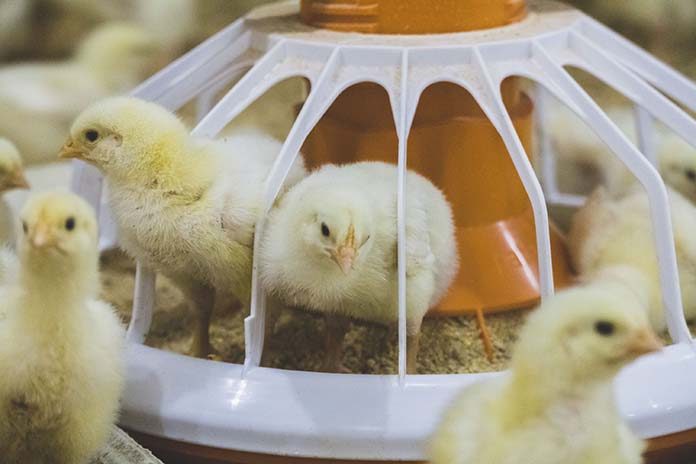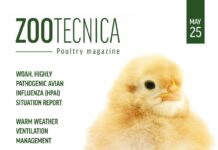
As restrictions to antibiotic growth promoters (AGP) have become more prevalent, producers have turned to several technologies as probiotics – Direct Fed Microbials to increase the efficiency of rearing animals intended for use as food. These technologies include exogenous enzymes, organic acids, direct-fed microbials (DFMs), prebiotics, herbal extracts, and essential oils. These additives are intended to address a number of areas impacted by AGP. Below we will focus primarily on DFMs as an alternative to AGP use.
Scientific background
The beneficial effects of bacteria have been observed extensively throughout human history. Modern scientific investigations are founded in the works of Nobel Prize winner Eli Metchnikoff, who promoted the idea that bacteria in yogurt contributed to the longevity of Bulgarian peasants. Over time these beneficial bacterial cultures have been referred to using terms like competitive exclusion cultures, probiotics, and direct-fed microbials.
The term “direct-fed microbials” is commonly differentiated as referring to beneficial live microorganisms that are consumed in the feed of animals intended for food production and is used synonymously with probiotic. Probiotics can be defined as live microorganisms which when administered in adequate amounts confer a health benefit on the host. The beneficial effects may include the reduction or exclusion of pathogenic bacteria, and has been previously referred to as competitive exclusion (CE) by Jaeger in 1974.
The term CE has also been adopted to describe a similar phenomenon first described by Nurmi and Rantala in 1973, where the ability of Salmonella to colonize the gastro-intestinal tract (GIT) of young chicks was greatly reduced by administration of a suspension of fecal material from healthy adult chickens. These CE cultures are a subset of probiotics, and have been extensively researched.
The benefits of probiotics in poultry are well documented and include the ability to decrease specific bacterial pathogens, decrease carcass contamination, increase body weight, increase the integrity of the GIT, decrease ammonia and urea excretion, reduce inflammatory reactions, improve mineral absorption, and increase immune function. These characteristics place probiotics in the lead as a potential replacement for AGP.
Effect of probiotic strains
Villus height to crypt depth ratio is thought to be indicative of intestinal health. Higher ratios indicate a healthier gut due to longer villus length, which is directly linked to surface area and absorption, while shorter crypt depth is indicative of a reduction of villus turnover. Awad et al. noted that broilers given a Lactobacillus probiotic had significantly higher villus height to crypt depth ratios than control birds. Tuomola et al. demonstrated that some probiotic strains of Lactobacillus reduced the adhesion of pathogenic E. coli and S. Typhimurium to intestinal mucus while others increased mucus binding.
These findings indicate that not all probiotic strains have similar effects. In cell culture, Bifidobacterium lactis 420 supernatant increased tight junction integrity and prophylactically protected tight junctions from damage by E. coli O157:H7. Farnell et al. studied the in vitro effects of multiple probiotic isolates on oxidative burst and degranulation. The three isolates exhibiting the greatest effects in vitro were administered individually to day old chicks and heterophils were isolated for measurement of oxidative burst and degranulation 24 h later.
All three treatment groups showed significant increases in the measured parameters as compared to untreated controls. As heterophils are important in controlling bacterial pathogens their stimulation may be one mechanism by which probiotics are able to reduce bacterial pathogens within the gut. Metabolites secreted by some strains of Lactobacillus have been shown to have anti-inflammatory effects. When these metabolites were introduced into cell culture they caused a suppression of tumor necrosis factor alpha, which could lead to a decrease of inflammation in the gut. Menard et al. reported further that this metabolite is able to cross the epithelial barrier and may be able to affect cells outside the GIT.
Further, transcriptional profiling of chickens fed probiotics suggested probiotic-induced differential regulation of multiple genes affecting innate immunity and apoptosis in the cecae of chickens, which may be a mechanism by which probiotics affect intracellular pathogens such as Salmonella.
Production efficiency
Probiotics have been shown to improve the production parameters of commercial poultry. Vicente et al. conducted a study in commercially housed broilers to determine what, if any, contribution a commercially available probiotic culture would have. The probiotic treated birds had a 0.9% reduction in mortality, a 2.06% improvement in body weight, and a 3.5% improvement in feed conversion as compared to non-treated controls. Torres-Rodriguez et al. evaluated the same probiotic in a similar trial in commercially housed turkeys. An increase in body weight of 190 g and average daily gain of 1.63 g was observed in 20 treated groups when compared to untreated controls.
In a cost comparison between treated and untreated groups, the cost per kilogram of meat was reduced by $0.0153 in the treated group. Wolfenden et al. observed a body weight increase of 8.7% over non-medicated controls and virtually identical increase as AGP treated birds in a trial conducted in commercially raised turkeys evaluating Bacillus spore based probiotic cultures. It was also observed that birds receiving the probiotic treatment were significantly less likely than non-medicated controls to be infected with Salmonella, with a rate of recovery of 18% and 48% respectively. No differences were observed in the AGP treated group. In addition to lower incidence of Salmonella, it was also noted that infected turkeys in the probiotic treated group had a significantly lower concentration of Salmonella in the ceca as compared to non-medicated controls.
An alternative to AGP
Available scientific evidence suggests that probiotics may offer an effective alternative to AGP usage. It is often argued that probiotics do not consistently show performance benefits, and as such are not a reliable alternative. It is important to note that although AGP improve performance approximately 70% of the time in production animals, no measurable positive effects occur in almost one-third of applications. Despite this observed rate of failure, AGP are used in abundance. Torres et al. reported a similar success rate with a lactic acid bacterium based probiotic in commercial turkeys.
The study utilized a total of 118 commercial turkey flocks and the probiotic was administered to 60 flocks. The weights of flocks from farms that historically ranked in the bottom 75% by the integrator were significantly increased (P≤0.05), whereas the weights of the flocks sold from the top 25% of farms were not significantly changed (P≥0.05). These data indicate for both AGP and effective probiotics, little positive effect would be anticipated in the best-performing flocks, possibly because these flocks were performing near maximum potential.
Commercial realities in the United States
Poultry producers in the United States, unlike many markets throughout the world, are challenged by minimal regulatory oversight for DFMs. The United States Food and Drug Administration (FDA) policy on labeling and marketing DFMs offers several options with vastly different requirements. Currently, all DFMs available in the USA follow the least regulated path, which categorizes DFMs as an animal feed ingredient. This pathway includes a requirement of containing approved live microorganisms, but prohibits any efficacy or function claims. Organisms approved for use as DFMs are published by the American Association of Feed Control Officials (AAFCO), based on their recognition as safe for use by the FDA.
An unintended consequence of this requirement is the repurposing of industrial microorganisms. These organisms were selected for their ability to produce food products, enzymes, metabolites, etc. rather than for use as effective DFMs. A DFM is administered with an expectation it will have a measurable benefit and an economic return on the expense, creating a situation where many marketers are pressured into making claims to establish business. A quick path to market with limited oversight has allowed repurposed industrial microbial products and unsubstantiated claims to contribute heavily to the inconsistency of DFM performance and negative market perception, resulting in a general skepticism for DFMs.
Developing and evaluating an effective DFM
As the DFM market continues to mature, companies are investing heavily in the development of application specific products and performance of proprietary strains. This is evident when the majority of DFM producers are now highlighting the fact that not all strains are equivalent, despite the similarity in nomenclature. The newer generation of DFMs is usually developed for a global market, which requires the creation of scientific documentation providing evidence of safety and efficacy. FDA regulations will not allow this evidence to be used in support of claims for feed ingredients but in the age of the internet, data is available for many products. Despite the increase in scientific due diligence associated with DFMs, it is critical poultry producers understand that the interactions between the beneficial microbes and the poultry consuming them are extremely complex. The natural variance in poultry production (genetics, diet, environment, management practices, etc.) has a major impact on the performance of a DFM. Moreover, our current understanding of DFM function and the ability to identify, collect, and analyze pertinent data creates difficulty in evaluating and improving the product class. It is clear from reviewing the scientific literature DFMs can and do deliver meaningful benefits to poultry producers. Popular press reflects the evolving relationship between poultry producers and DFMs. Interviews with prominent poultry producers reveal an attitude of initial skepticism to DFM efficacy, followed by a period to learn what practices, products, and management changes are required to replace AGPs. DFMs are never a 1:1 replacement, but are uniformly used as a critical tool for AGP free poultry production.
References are available on request.
From the Proceedings of the 2019 Midwest Poultry Federation Convention

















